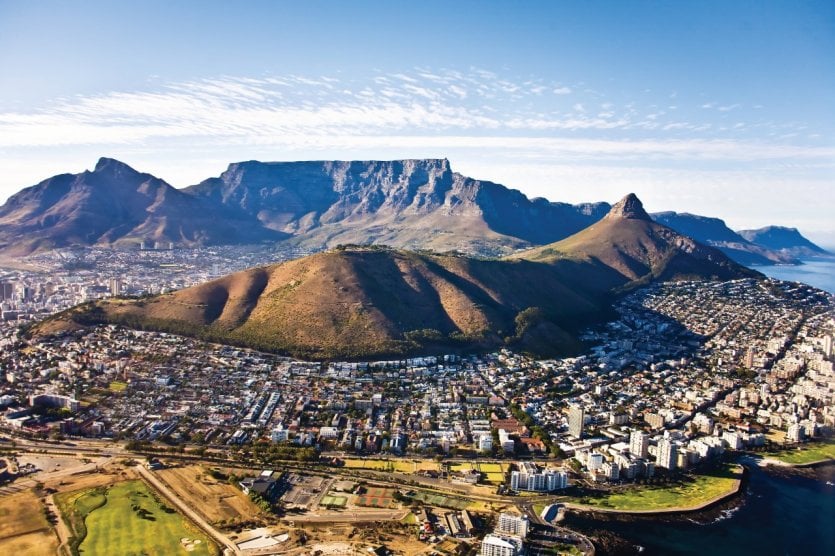
andreaWillmore - iStockphoto
Cape Town is a city of exceptionalnatural and historicalwealth : vibrant, sunny, green, trendy, fun & cool, it's also one of the most beautiful cities on the continent. It's at the crossroads of continents: at the very southern tip of Africa, looking towards Asia and America, with a definite European influence. Cape Town is also at the crossroads of the elements: its feet in the ocean, its head in the mountains, and bathed in exceptional flora and fauna, as rich as that of Great Britain. This diversity is also reflected in the city's population, which is highly mixed: founded by the Dutch, it has also seen the arrival of Huguenots and British. The slave trade brought representatives of Asian peoples, such as Indians and Malaysians. Cape Town is a destination of choice, and we're going to take a look at its many must-sees.
And the good news is that Cape Town is one of those kid-friendly destinations where it's great to travel with the family or a baby.
1. What to do in Cape Town Going to the Cape of Good Hope
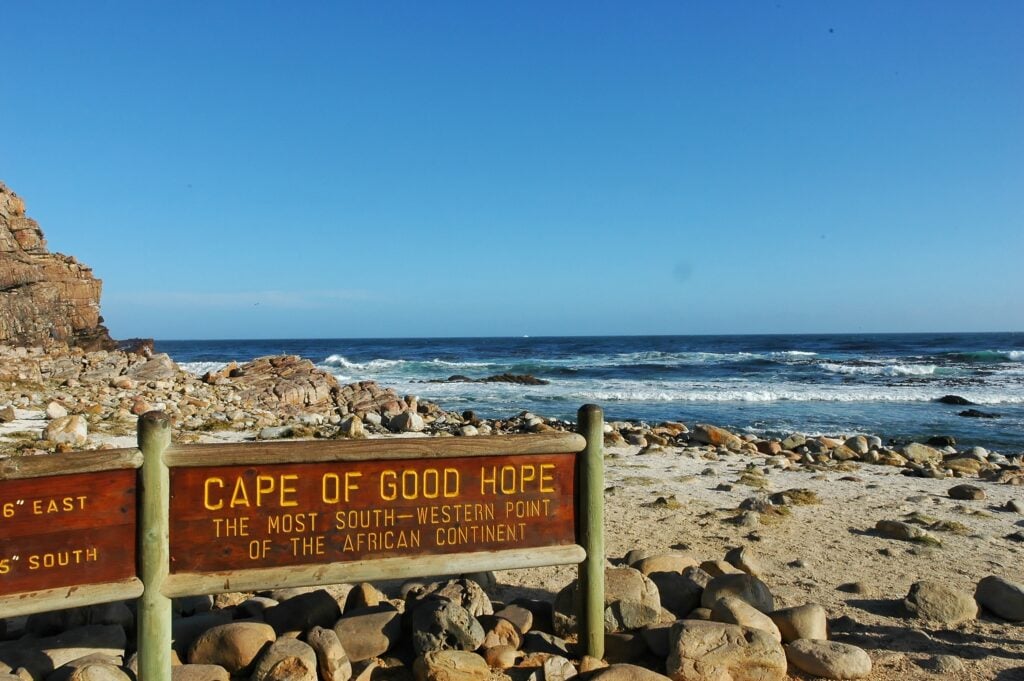
If the Cape of Good Hope is such a dream, it's because it epitomizes travel and the end of the world in South Africa. To get there, you'll have to enter the Cape of Good Hope Nature Reserve and drive all the way to the end. Enjoy the magical view from the top of the rock overlooking one of the Cape of Good Hope's magnificent beaches, and see numerous species of birds and animals such as ostriches, antelopes and baboons! At Cape Point, 150 meters away, you can visit the small museum that tells the story of this mythical place.
Click here to book your guided tour of the Cape of Good Hope and the penguins from Cape Town.
2. Grand Parade and Cape Town Town Hall
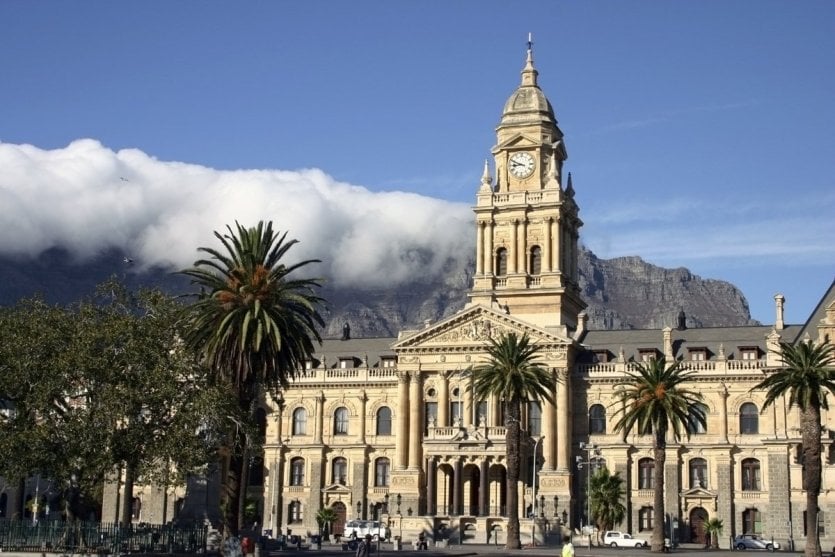
"Grand Parade is THE square in Cape Town and one of the must-sees in South Africa. It has witnessed many of the great events that have shaped the history of Cape Town and South Africa. Here, for example, we findthe Fort of Good Hope, the oldest European construction in South Africa, which was used to supply the ships of the East India Company on their way east. The square was laid out in Renaissance style around the town hall in the early 20th century. It was from here that Nelson Mandela shouted "Amandla! Afrika" to the crowd on his release from prison in February 1990. A year earlier, the largest anti-apartheid rally had been held in front of the town hall on the same square.
3. What to do in Cape Town See thehe rocky peak of Lion's Head
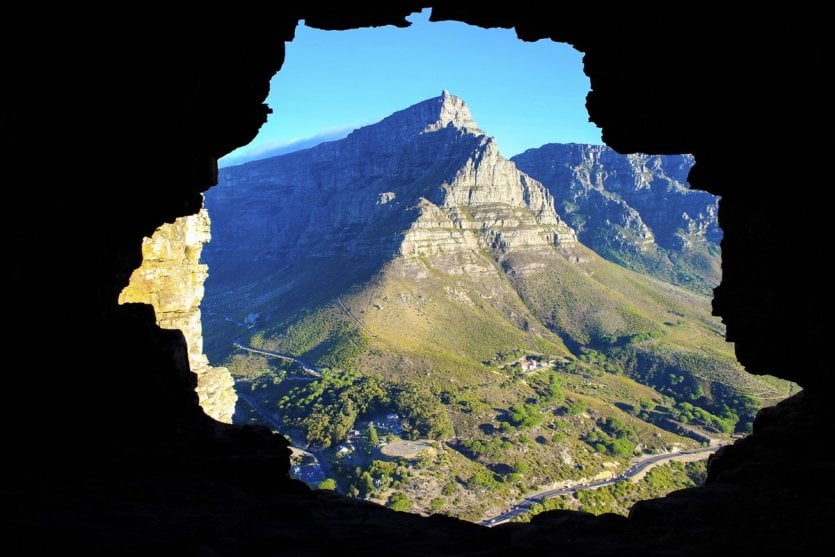
Lion's Head is one of those places you absolutely must see at least once in your life. Overlooking Cape Town from a height of 669 meters, Lion's Head is a rocky peak whose ascent affords exceptional panoramic views of the city, the ocean and Table Mountain. It was the first Dutch settlers to arrive in South Africa who christened it "Leeuwen Kop" (or Lion's Head), although it seems difficult to distinguish the features of the king of animals. Lion's Head is also renowned for its sunsets, which are a major attraction for lovers. However, climbing Lion's Head is not recommended for children or people suffering from vertigo. Lion's Head is a steep, rocky peak, so you need to equip yourself carefully before any hike: go here to book your sunrise or sunset hike at Lion's Head.
4. Kirstenbosch national botanical Gardens
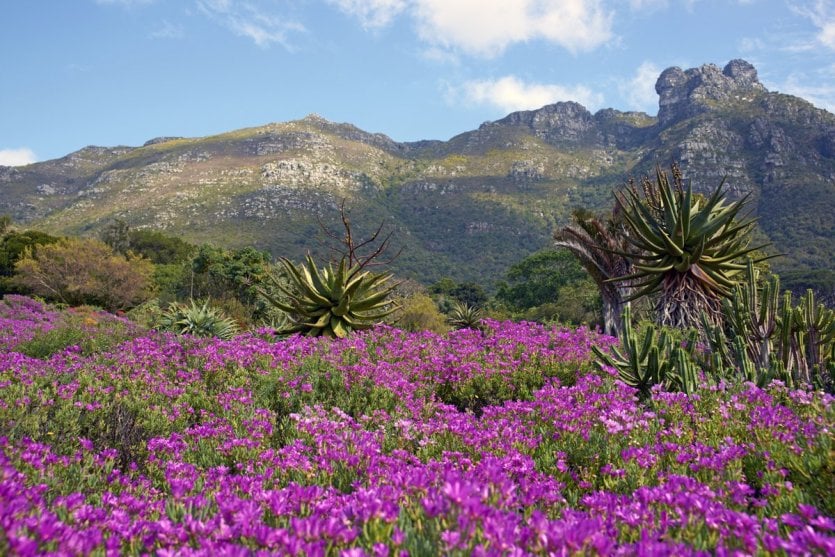
Established in 1913 to showcase and protect the diversity of South Africa's flora, the Kirstenbosch National Botanical Gardens are a veritable paradise for horticultural enthusiasts. The gardens cover a total of 528 hectares, of which 36 hectares are open to the public. Here you'll discover many of the region's endemic species, which make up what is known as the Fynbos, South Africa's typical scrubland. There are 8,500 different species in the area where botanists work, and some 900 species in the area left untouched. Numerous animals have also made their home here, making it, in the eyes of locals and specialists alike, the most beautiful garden in South Africa. Interested in discovering these gardens? Book your tour of the Skeleton Gorge and Kirstenbosch Gardenshere.
5. What to do in Cape Town Go to Table Mountain
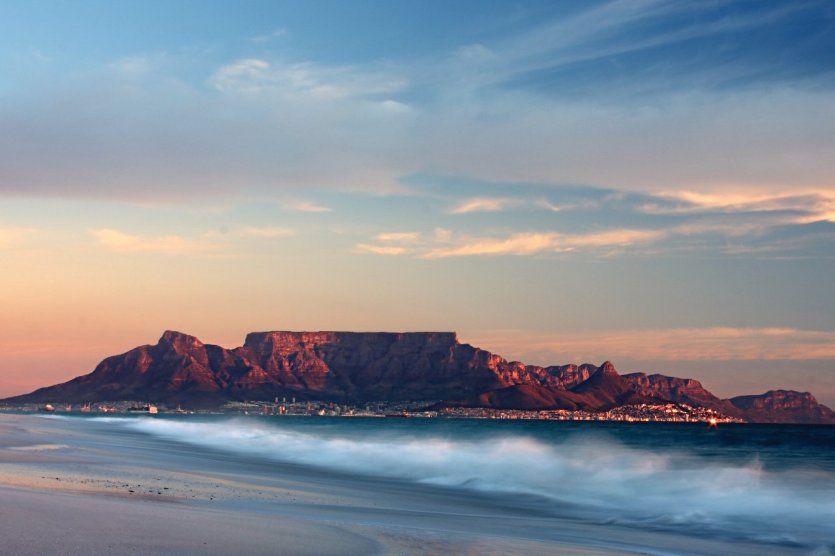
Another Cape Town must-see: Table Mountain. And not least! This famous mountain is one of the New 7 Wonders of Nature, alongside the Amazon and Iguazu Falls in Brazil and Argentina. Its name "Table" comes from the fact that passing clouds seem to form a blanket that covers the mountain. It is part of the Table Mountain Park, created in 1998 to preserve the richness and unique biodiversity of the area. For a breathtaking view of the surrounding area, it's possible to climb it, thanks in part to a cable car that allows you to marvel effortlessly(go here to book your cable carticket ). For the more courageous, it's also possible to take a 5-day hike specially organized by the park's guides.
6. Robben Island
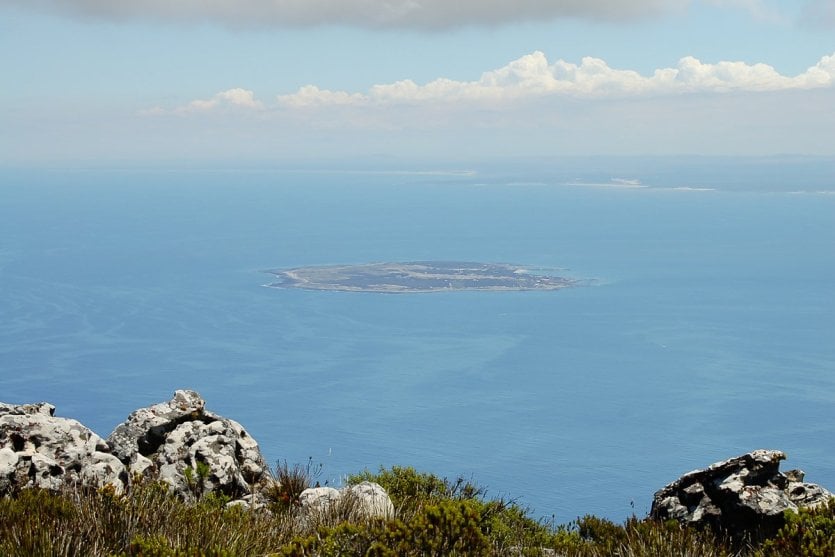
Robben Island is an island off the coast of Cape Town. A visit to Robben Island is extremely interesting from a cultural and historical point of view. Its 5.07 km2 have been home to a prison, an asylum and a leprosy center. In other words, it's never really had a good reputation. Nelson Mandela also spent several years there, locked up along with two other future presidents: Kgalema Motlanthe and Jacob Zuma. Today, the island is a Unesco World Heritage Site, home to a museum and numerous seals: "Robben" is Dutch for "seals". To better understand the complexity of Robben Island's history, and ultimately that of South Africa, so intertwined are they, a guided tour with an ex-convict as guide can be booked here.
7. What to do in Cape Town Visit the Cape Town Old Slave Lodge
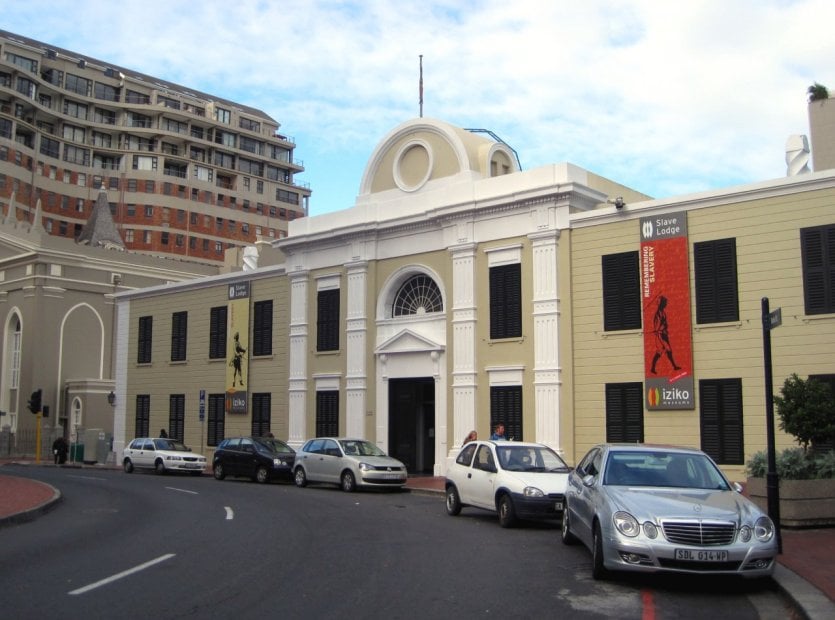
After nature comes culture with the Slave Lodge, one of the city's oldest buildings. Today it houses the Cape Town Museum of Cultural History, but its past wasn't always so glorious. Cape Town was a hub for the Dutch East India Company, which brought over 9,000 slaves from Asia and elsewhere. The Slave Lodge buildings were used to assemble and prepare them for sale. In 1810, the premises became a government office, and were later used by the Supreme Court. It wasn't until 1960 that Slave Lodge took on its present form as a tribute to the legacy of slavery in South Africa's mixed culture.
8. What to do in Cape Town Stroll through the malay quarter of Bo-Kaap
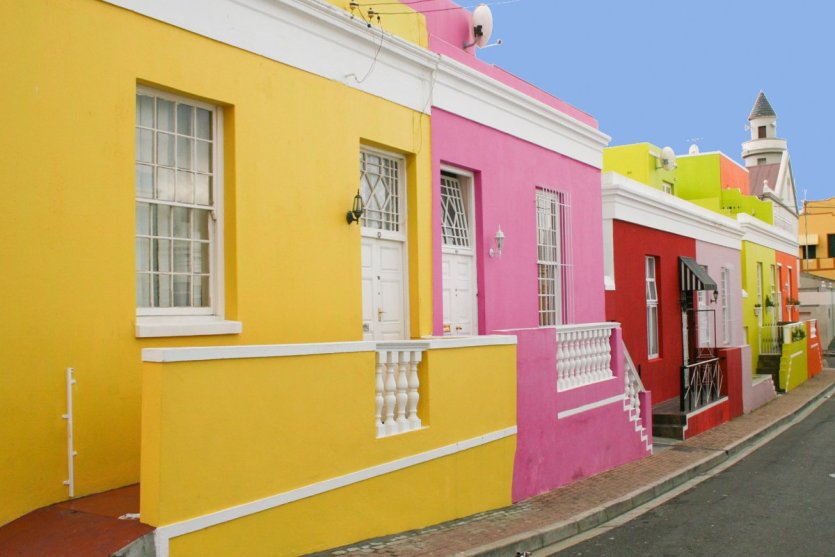
The Bo-Kaap district is all about color, colorful facades and cobblestone streets that make you smile, even on a rainy day. In the City Bowl, in the center of Cape Town, Bo-Kaap is situated on a mountainside, which is where its original Afrikaans name comes from, meaning "Above the Cape". This is the city's Malay quarter, where the descendants of the mostly Muslim slaves from Asia, known as Cape Muslims, have made their home. Despite the terrible conditions in which they had to survive, they were the ones who built the city. The use of such bright colors to paint the facades of the houses is a strong symbol for the inhabitants of the district, a real thumbing of the nose: slaves were in fact forbidden to wear even colored clothes.
9. A detour to Franschhoeck
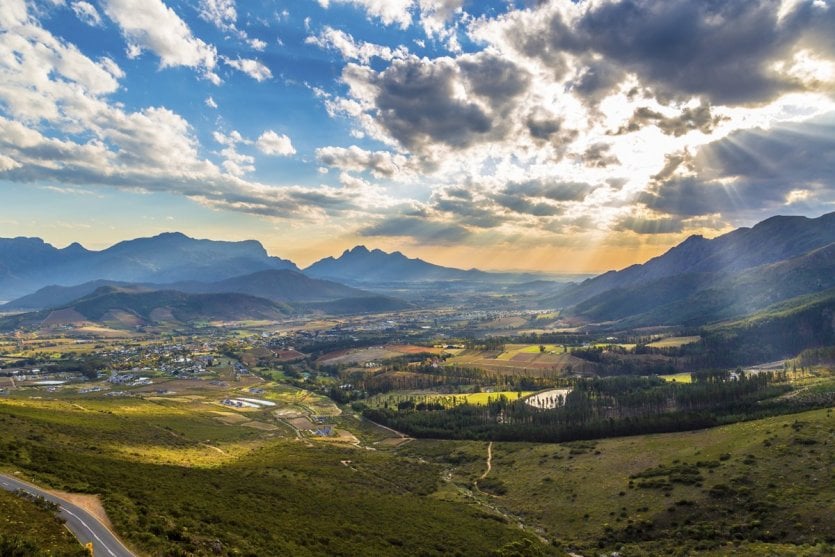
A little jaunt around town that's well worth the detour: Franschhoek, or "The French Corner". On the wine route, in a valley protected from the wind, the town has all the charm of French Provence. This comes from Franschhoeck's origins, when Governor Simon van der Stel decided to strengthen the East India Company in South Africa. To this end, a recruitment campaign was launched in Holland, where many Huguenots had taken refuge following the revocation of the Edict of Nantes. Some 200 of them decided to leave and rebuild their lives at the very end of the African continent. It's from this heritage that Franschhoeck derives its name, but also some of its traditions: July 14th is celebrated here, as is the Fête du Fromage, and the local winegrowers' estates bear French-sounding names such as La Motte and La Dauphine.
Explore the wine-growing regions of Paarl, Franschhoek and Stellenbosch in a day on this guided tour, which includes visits to three estates, 15 wine tastings and a guided walk through Stellenbosch . See also our dedicated article "The world's top 10 wine destinations"!
10. What to do in Cape Town Neighbourgoods Market
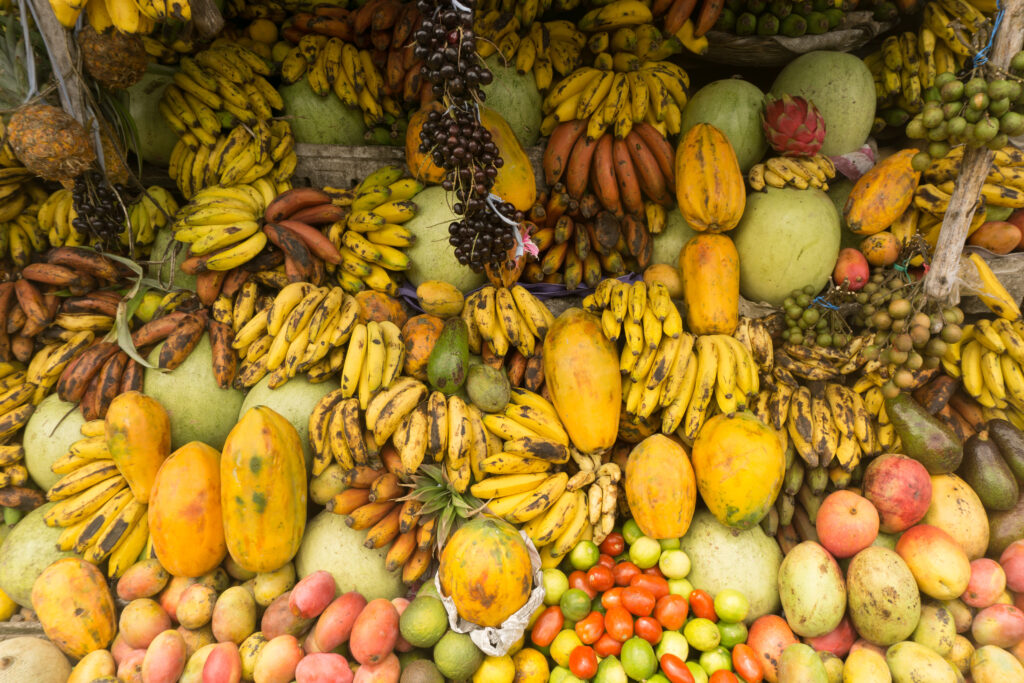
This is surely Cape Town's most emblematic food market, and all the city's restaurateurs and small food vendors have a stall here. Visit a former cookie factory where you'll find sandwiches, ready-made meals, grilled meats, mushroom skewers, homemade cakes, Asian specialties... All healthy and tasty. There are also wine, cocktail and fresh fruit juice stands. There's something for every taste, every flavor and every country!
11. Partying on Long Street

Long Street, a shopping and tourist artery, is at the heart of Cape Town's nightlife. As its name suggests, it's very long: it starts from the De Waterkant business district and, after the intersection with Strand Street, becomes part of the popular Bo Kaap district, with its small halal grocery stores, bookshops and mosques. Finally, the upper part of the street features restaurants, nightclubs and backpackers, where you can party the night away during your stay in Cape Town!
12. What to do in Cape Town Sunbathing on Camps Bay beach

During a Cape Town getaway, one of the must-dos is sunbathing on Camps Bay beach, located between the majestic Twelve Apostles mountains and the Atlantic Ocean. This stretch of golden sand offers an idyllic setting to relax and soak up the sun while admiring panoramic views of the ocean and spectacular rock formations. The crystal-clear waters invite you to take a dip, and the many seafront cafés and restaurants offer refreshments and delicious food, making for a relaxing day out in the heart of Cape Town.
13. Taste South Africa's culinary specialties

Reflecting the country's cultural diversity, South African cuisine offers a palette of unique flavors. A must-try is the "braai" Start by savoring a braai, South Africa's equivalent of a barbecue, where meats such as boerewors (spicy sausage) and biltong (dried meat) are grilled to perfection. Round off your culinary experience withmalva pudding, a soft dessert drizzled with caramel sauce, or a koeksister, a braided pastry soaked in sweet syrup.
Where to stay in Cape Town?
The choice of accommodation in Cape Town often depends on individual preferences in terms of neighborhood, budget and desired experience. Here are a few suggestions of neighborhoods and types of accommodation that may suit different needs:
1. City Bowl: This central district is ideal for those wishing to be close to major attractions such as Table Mountain, the Castle of Good Hope and the V&A Waterfront. A range of hotels, hostels and vacation rentals can be found here.
2. V&A Waterfront: This is a popular tourist area with a multitude of accommodation options, from luxury hotels to rental apartments. Its proximity to stores, restaurants and attractions makes it a convenient choice.
3. Camps Bay: For those who prefer a coastal setting, Camps Bay offers spectacular beaches and a variety of upscale hotels. Sunsets over the ocean are a major attraction.
Discover here our three favorite accommodations in Cape Town:
- The chicest: Abbey Manor Luxury Guesthouse
Located in Cape Town's Oranjezicht district, the Abbey Manor Luxury Guesthouse is a 5-star hotel housed in a former priory dating from 1905, which you can book here. Its strong point? Its proximity to tourist attractions such as the Iziko South African Museum and Table Mountain National Park. You'll enjoy an outdoor pool, solarium and balcony with hot tub.
- The friendliest: La Rose B&B
Click here to book your stay at this hotel , where Cape Town's cosmopolitan spirit comes to the fore! Right in the center of Bo-Kaap and run by a young Breton-South African couple, the Rose B&B, a beautiful house in shimmering colors, is a true convergence point for Cape Town's cultures and influences. You can also enjoy your coffee on the terrace and work in peace.
- The most unforgettable: Inverdoorn Game Reserve Lodge
Admittedly, this lodge is 2.5 hours from Cape Town, but we had to tell you about it. The lodge offers 4 and 5-star 5-star bungalows with safari-contemporary decor and two private terraces in front of the chalet and on the roof, all in a setting inspired by desert elements. You'll enjoy an authentic bush experience in one of the most beautiful parts of the reserve. In the evening, you'll share a braai while listening to the life of the reserve. An unforgettable experience that you can book right here.
What to see in Cape Town in 3 days
Visiting Cape Town in three days offers the opportunity to discover a variety of iconic sites, blending history, culture and natural landscapes. Here's a suggested itinerary to optimize your stay:
Day 1: Historic downtown and Table Mountain
- Morning: Start your day exploring the historic city center. Visit the Castle of Good Hope for a glimpse into colonial history, then stroll the bustling streets to discover the varied architecture.
- Afternoon: Head for Table Mountain. Weather permitting, take the cable car to the summit for panoramic views of the city. Otherwise, a hike can offer a more active experience.
- Evening: Dine at one of the restaurants in the V&A Waterfront district, offering a wide range of cuisines with harbor views.
Day 2: Cape of Good Hope and Boulders Beach
- Morning: Leave early for the Cape of Good Hope. Explore the nature reserve, discover the local wildlife and reach the point where the Atlantic and Indian Oceans meet.
- Afternoon: On the way back, stop at Boulders Beach to observe the adorable African penguins that populate the beach.
- Evening: Back in Cape Town, relax with dinner at one of the restaurants in the Camps Bay district, offering magnificent ocean views.
Day 3: District Six Museum and Wine Route
- Morning: Visit the District Six Museum to learn about the complex history of this region. Explore the exhibits that bear witness to the consequences of apartheid.
- Afternoon: Then set off on the wine route, in particular to Stellenbosch or Franschhoek. Taste local wines at renowned estates and enjoy the picturesque scenery.
- Evening: End your stay with dinner at one of the gourmet restaurants in the Constantia district, famous for its culinary establishments.
This itinerary offers a balanced exploration of historic attractions, natural beauty and local culture, allowing a complete immersion in the essence of Cape Town in three days. Be sure to check opening times and plan your travel to maximize your time.
What to do in Cape Town when it rains?
In Cape Town, where the climate can be variable, it's possible to make the most of the city even on rainy days by exploring covered sites and indoor activities. Here are a few suggestions for things to do when it's raining:
1. Visiting museums: Cape Town is home to several captivating museums. The District Six Museum, dedicated to the history of apartheid, and the South African Museum, with its vast artistic and cultural collection, are enriching choices.
2. Discover the art galleries: The city is full of contemporary art galleries where you can explore the creations of local and international artists. The Zeitz Museum of Contemporary Art Africa (MOCAA) offers a unique artistic experience in an impressive architectural setting.
3. Explore covered markets: Head to covered markets such as the Old Biscuit Mill in Woodstock. You can sample a variety of local dishes, discover artisanal products and enjoy the lively atmosphere sheltered from the elements.
4. Shopping malls: Shopping malls such as the V&A Waterfront offer a multitude of boutiques, restaurants and indoor activities, making them an ideal rainy-weather option.
Tempted by a vacation in South Africa? Take advantage of a discount by booking your travel insurance here and leave with peace of mind! Wondering what to do your first time in South Africa? Discover our dedicated article!


